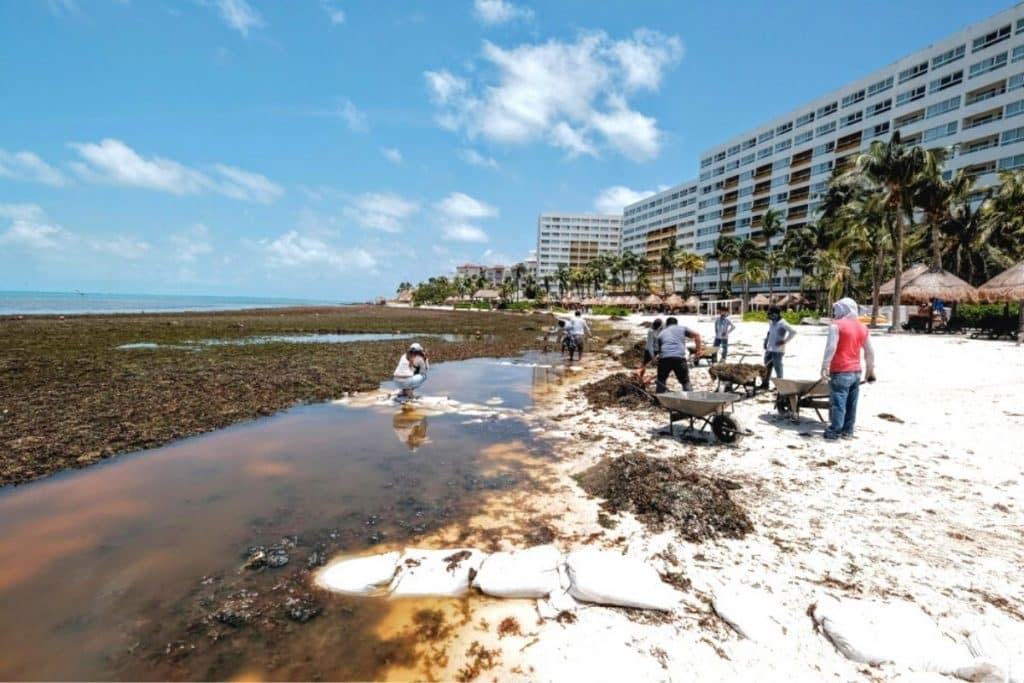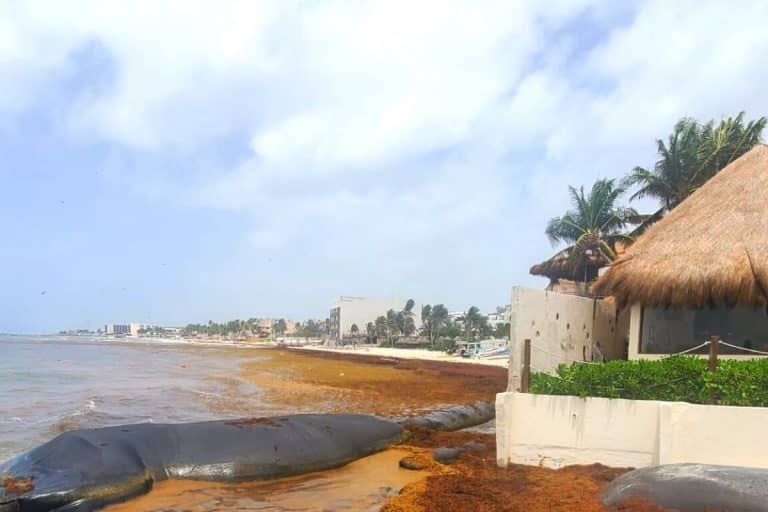Sargassum seaweed has been growing organically in the water for centuries. It only appeared on the coasts less than a decade ago, with global warming and the destruction of coral reefs being two of the main causes, according to experts.
The situation is now so serious that some beaches are on high alert and denying beachgoers access. This is the case at Fundadores beach, Recodo beach or Coco Beach, where the sargassum is spreading massively.
Suggested: Cancun Forecasts Worst Seaweed Sargassum Season In The Last 5 Years
Other beaches experiencing the arrival of excessive amounts of sargassum include:
- Nizuc Playa Coral
- Riviera Cancún
- Bahía Petempich
- Moon Palace
- Royalton Riviera
- Playacar Ferry
- Punta Molas
- Playa Xhanan
- Playa Bonita
- Mezcalitos
- Punta Morena
- Playa Chen Río
- Playa San Martín
- Bush
- Playa Encantada
- Punta Celarín
- Xcacel-Xcacelito
- Tulum Ruinas
- Tulum ZN Norte
- Punta Piedra
- Tulum ZH Sur
- Arco Maya
As of today, only 4 beaches in Cancun are sargassum-free.
In Cancun’s main hotel zone, Gaviota Azul beach and Chac-Mool beach, remain at the green warning level.
For nearby Mamitas Beach, where the famous Mamitas Beach Club is located, a yellow warning level is in effect, so the beach and its facilities can be used almost as usual.
To help tourists, authorities have developed a unique service that warns travelers about the amount of sargassum on local beaches.

The invasion of sargassum that was recorded this weekend on the coast of Quintana Roo has generated losses in more than 10% of the activities of the nautical sector.
This is added to the fact that during the current year the ports have remained closed for more than 15 days of navigation, thereby generating losses of around 300 million pesos per day. (US 15M)
Ricardo Muleiro, chief executive officer of Asociados Náuticos Quintana Roo, explained that the sargassum problem “has mainly affected the center and south of the state, although recreational activities in the north have also been affected since it keeps tourists from buying stuff. In the south, it has basically affected the entire coastal area, and it has been difficult for tourists to enjoy the sea.”

